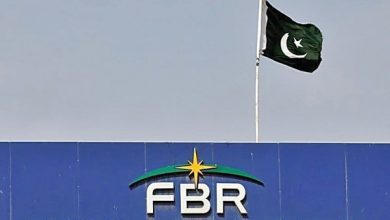Investing in real economy

Pakistan has invariably been a very difficult country to do business in, let alone thrive profitably. Keeping the much-touted rankings of ease of doing business aside, investors have often faced increased uncertainty over the past decade.
This uncertainty stems from fluctuations in interest rates, currency value, external debt, a volatile ‘bromance’ with the International Monetary Fund (IMF), political tug-of-wars, the looming threat of Financial Action Task Force (FATF) sanctions, risks of economic default, and border tensions. Despite these challenges, some businesses have excelled and invested, often benefiting from government-offered cheap financing schemes.
Let’s understand why such investments are necessary. The government is the job creator of last resort. Unfortunately, there is a notion in Pakistan of creating government jobs and distributing them to voters or relatives. It’s no wonder why many opt for competitive civil services examinations, seeing it as their ticket from the lower/middle class to the upper class in Pakistan.
Globally, more than 95% of jobs are created by the private sector, with clear data available on vacancies, industries, salary structures, geographical reach, and other details. In Pakistan, the corporate sector and seths have primarily created jobs aside from blue-collar, low-skilled workers.
Perhaps it’s time for rich investors, corporate decision-makers, and entrepreneurs to invest in the real economy again. The budget has been instrumental in nudging capitalists to start investing. While critics and media rightly highlight the increased burden on the salaried class, infant milk, and stationery, they have yet to appreciate the pension reforms and disincentives for not industrialising.
For corporations, cash-rich organisations used to invest billions of rupees in money market mutual funds to avail free tax arbitrage worth billions of rupees. In times of high double-digit interest rates, they enjoyed much higher after-tax returns of 17-19% at the expense of the exchequer under the guise of growing the asset management industry in Pakistan. With falling interest rates and the practical end of tax arbitrage, the after-tax return should decline to a more moderate 10-11% by the end of the fiscal year 2025.
Let’s look at where the seths or black-market investors parked their money: real estate. The government has rightly increased the tax rate on filers and non-filers while adding the category of late filers. Although properties worth above Rs30 million are to be taxed at higher rates progressively, the government could have reduced that threshold to Rs10 million or below. Additionally, those keeping their money in plots would be charged a 5% FED on the first-time purchase of residential plots and every subsequent purchase of commercial plots.
Hence, a transaction cost of 10% is imposed if an individual buys and sells a commercial plot within one year. Had the government been smart enough to increase the tax rate on every subsequent purchase of real estate, for example, the first plot at 5% FED, the second at 7.5%, and the third at 10% and beyond, the real estate market would have become completely unattractive for investors, and prices would have rationalised to a lower level to attract genuine buyers. President Xi of China said, “houses are for living, not speculating.”
An additional disincentive for real estate investment is the flat 15% CGT for filers and 45% for non-filers, irrespective of the holding period. To make things worse (or better), the value at which CGT is computed is also likely to be revised by the FBR from 75% of market value to 90% of market value soon. Hence, the big players can and should say a short- to medium-term goodbye to “Plotistan” and property for quick gains and asset flipping. So, where to now?
It’s time for people with capital to look for real investment opportunities. That means creating jobs for others and adding to economic activity. Pakistan desperately needs significant investments in growing exports and import substitution. Some of that money should flow to undervalued sectors in the stock market to be ready for the next boom and capitalise on the next leg of IPOs.
If wealthy families previously announced hefty dividends to buy virgin land to create housing societies (which still is a lucrative business and a main source of income for many rich politicians, industrialists, and powerhouses), it is vital to tilt towards investing in the real economy, provided the government maintains conducive policies, lowers interest rates, and ensures economic stability by reducing the debt to GDP ratio below 50% in the next 10 years.
Manufacturing and industrialisation are the only ways to create jobs for a low-income, agriculture-dependent, high-population country that could eventually see social unrest and oblivion. The only way to make 15-20% returns in Pakistan should be through creating jobs for others and not parking assets in sovereign risk-free or real estate dead capital.





